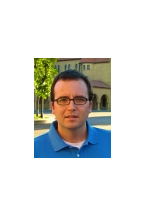
Researchers at Multi-Physics Interaction Lab (MPILAB) in mechanical and mechatronics engineering are developing a revolutionary conceptual in-space propulsion technology.
Myself, along with Jean-Pierre Hickey, an assistant professor at the University of Waterloo, are leading this research which is sponsored by an aerospace tech company, Columbiad Launch Services.
In short, when we leave Earth and populate other planets/asteroids, we cannot take our fuel with us; we need reliable and fuel-efficient engines that work on fuels that are easily produced on those celestial bodies.
The traditional rockets or in-space thrusters are either high fuel-efficient with low thrust (e.g. ion thrusters), or low fuel-efficient with high thrust (e.g. monopropellants like Hydrazine).
The current research seeks a highly fuel-efficient and high thrust engine that works on an easily obtained power source.
Based on the nature of the surrounding planets and asteroids, the dust present on and under their surfaces will be the main fuel for this engine which will work via the combustion of aerosolized dust particles.
So let’s say we got to Mars or any other planet or asteroid, then what? How do we replenish our engines?
Our idea is that we need to use what is available there which is mainly dust. We can mine it, then use it as fuel for our engines which will work mainly on metallic dust!
In essence, the dust will be dispersed and carried to the combustion chamber by any compressed gas, the dust will heat (by a technology developed by Columbiad), expanding the gas, which will pass through a nozzle producing thrust.
Our team is currently using Computational Fluid mechanics to model the very complex multiphase turbulent reacting flow. This will help address a lot of scientific issues and predict the behaviour of this technology.
We hope to advance our current understanding of the underlying physics through numerical modeling to ultimately build a first working prototype.
It’s cheaper, through numerical simulations, to simulate reality. The accuracy is dependent on your numerical models.
It is also safer, some experiments are very dangerous and can put people’s lives in danger.
Finally, numerical modeling is fast: having a supercomputer, you can simulate a lot of cases and scenarios to improve your design.
In terms of work restrictions on these subjects, it is easier to work on these kind of projects here in Canada compared to Europe and US.
The USA and countries in Europe impose tough restrictions on foreign scientists in this field.

Courtesy UW































